A report on botanical activities in VC104 from July to December 2023 is available here.

A report on botanical activities in VC104 from July to December 2023 is available here.

Seth has sent nearly 1,000 records from August onwards, which made me realise that I never mentioned here his finds of Geranium psilostemon (Armenian Crane’s-bill) and Inula racemosa (Indian Elecampane) from Kyleakin in August, both new to VC 104.
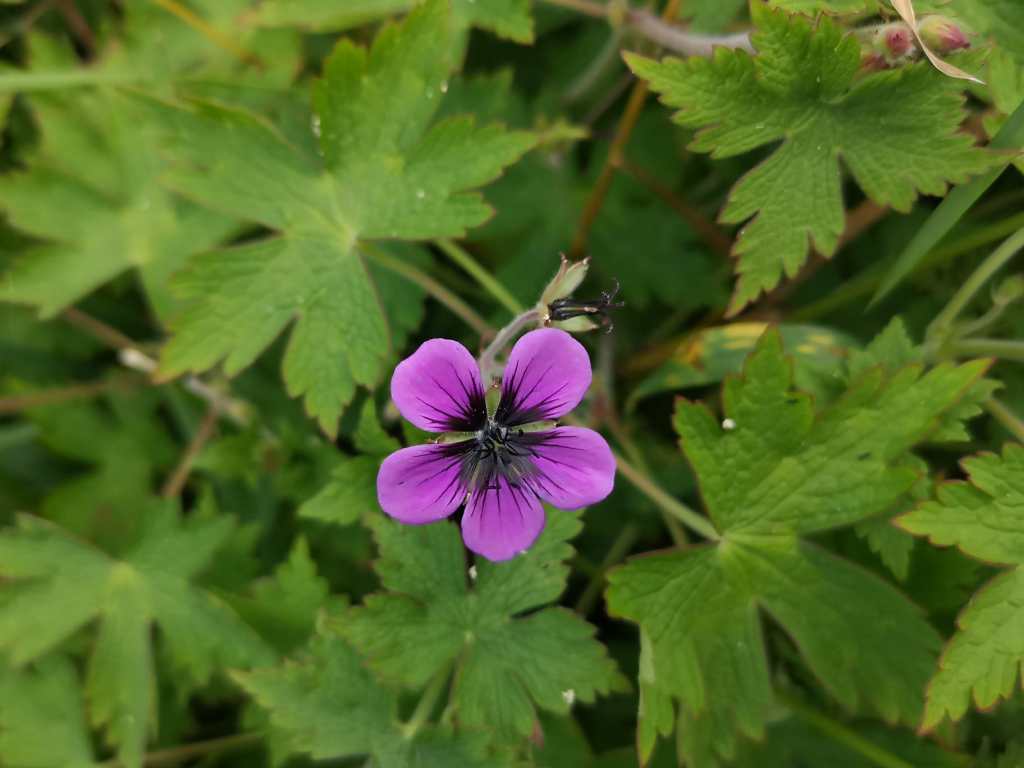

Also at Kyleakin, he had second VC records for Buddleja globosa (Orange-ball-tree), Fallopia baldschuanica (Russian-vine) and Veronica longifolia x spicata (a hybrid garden speedwell), plus the third for Tropaeolum majus (Nasturtium).
Turning to native plants, he found the first Drosera x obovata (Obovate Sundew (D. rotundifolia x anglica)) in NG50 with its parents.
This batch included a total of twelve new 10 km square records.
Back in 2015, I was asked by the Botany team at the Royal Horticultural Society, Wisley to provide samples of naturalised Gunnera plants for DNA analysis. I have just received the results and the two from Sleat are G. tinctoria. However, two others, from Waternish and the Dunvegan area, turn out to be Gunnera x cryptica, the recently described hybrid between G. manicata and G. tinctoria.
Interestingly, the study concludes that G. manicata has not survived in the British Isles following its introduction in the 19th century, but it has clearly left its genes in the hybrid.
Two papers describe their work:
Edwards, D., Armitage, J., Bilsborrow, J., David, J., Gebauer, M., Hassemer, G., … Könyves, K. (2023). An investigation of large-leaved Gunnera L. (Gunneraceae) grown outside in Britain and Ireland. Sibbaldia: The International Journal of Botanic Garden Horticulture, (22). Retrieved from https://journals.rbge.org.uk/rbgesib/article/view/1998
Shaw, J. M. H., Edwards, D., David, J (2022). A new spontaneous hybrid in Gunnera subgenus Panke (Gunneraceae) widespread in the British Isles, with notes on the typification of G. manicata. British & Irish Botany 4(3): 364-384, 2022. Retrieved from https://britishandirishbotany.org/index.php/bib/article/view/129/164
I reproduce here, with permission, Figure 1 from Edwards et al.

David has sent me records from a visit to Skye in July/August 2022, mostly from Edinbane where he added Sedum acre (Biting Stonecrop), Euphrasia arctica (Arctic Eyebright) and Mentha x villosonervata (Sharp-toothed Mint (M. spicata x longifolia)) to the list for NG35.
He also made two very impressive finds elsewhere: non-flowering Scilla verna (Spring Squill) near the Coral Beach – a first for Skye though known on Canna and Sanday – and Epipactis helleborine (Broad-leaved Helleborine) near Portree, making this the first 21st-century record for this plant in VC104, beating the one made by Seth and myself in August this year. He very modestly says that I should check these before accepting the records, but it seems pretty unlikely that either would be mistaken for anything else. That’s two excursions planned for 2024 then.
Thomas spotted two mountain hares on Raasay a few days ago. This is excellent news as I used to see them fairly often, but I haven’t spotted one for nearly twenty years. I thought they had gone. The photos (presumably from a phone in the dark) will not win awards but as evidence they are invaluable.

On a smaller scale, I have spotted larvae of the micro-moth Epinotia tedella (Common Spruce Bell) on Sitka Spruce. As far as I can see there are only two previous records from the vice-county and none from Raasay. I bet it is common though – there were quite a few on the first tree I inspected. No image at the moment – a replacement camera should be here imminently, the old one having died.
It turns out that a greenbottle I captured near Glasnakille on Skye back in July is the first record for Scotland. It is Lucilia bufonivora (Toadfly) and I am afraid that the specific name says it all – the larvae feed on (and indeed kill) toads. It is not a pleasant lifestyle. Murdo has dissected it and says “the acrostichals [bristles on the top surface of the middle part of a fly’s thorax], palps, and genitalia leave no room for doubt”.
There are no records for Scotland on NBN, but one as yet unvalidated record on iRecord in Renfrewshire, which I have no reason to doubt, but that is from three days later than mine! Not that dipterology is a competitive sport 🤣.
On a more mundane note, I had the cranefly Tipula pagana on the outside of the house yesterday. This is the fourth year running that I have seen this species in November (or in one case, late October) on Raasay. The females have very short reduced wings and are not capable of flight.



John sent me pictures of something growing in his garden on Skye that I am pretty sure is Guizotia scabra (Sunflecks), a close relative of Niger. The latter (G. abyssinica) is well-known as a birdseed alien but Stace (2019) notes that G. scabra “has been found recently along with G. abyssinica in some samples of Niger used for birdseed”.
The BSBI database records for these two species by decade are as follows:
| Decade | G. abyssinica | G. scabra |
|---|---|---|
| 1910 – 1919 | 3 | |
| 1920 – 1929 | 1 | |
| 1930 – 1939 | 4 | |
| 1940 – 1949 | 0 | |
| 1950 – 1959 | 12 | |
| 1960 – 1969 | 21 | |
| 1970 – 1979 | 68 | |
| 1980 – 1989 | 38 | |
| 1990 – 1999 | 54 | |
| 2000 – 2009 | 187 | |
| 2010 – 2019 | 274 | 12 |
| 2020 – 2023 | 121 | 9 |
Whether the addition of G. scabra to birdseed mixes is a recent phenomenon or whether its presence was overlooked until recently would need further research.
Stace says G. abyssinica is “sparsely hairy” which John’s plants most certainly aren’t. Stace also says that G. scabra has densely hairy stems and rarely flowers before frosting.


Here on Raasay, an outing with Alasdair from the Woodland Trust and Tom from CNI Raasay to look at the condition of some native woodland led to some bycatch: Somewhat surprisingly, this Mosaic Puffball is the first record for VC104 since 1964 and all the earlier records are from the Small Isles rather than Skye or Raasay. The ruler is 15 cm.



Also, these leafmines on Hazel are made by larvae of the micromoth Stigmella microtheriella (Nut-tree Pigmy). The only Stigmella mines on Hazel that I have seen before have been of S. floslactella (Coarse Hazel Pigmy), though both have a number of records locally.

Neil and I had an excursion on Raasay last week to catch a spit on the east coast of Raasay at low water. Whilst waiting for the tide we checked some coastal woodland for fungi and whatever else we could find.
Lichens included species of both Sticta and Stictis species. The recent split of Sticta fuliginosa into four separate species does not help us amateurs to get to species level in our identifications.
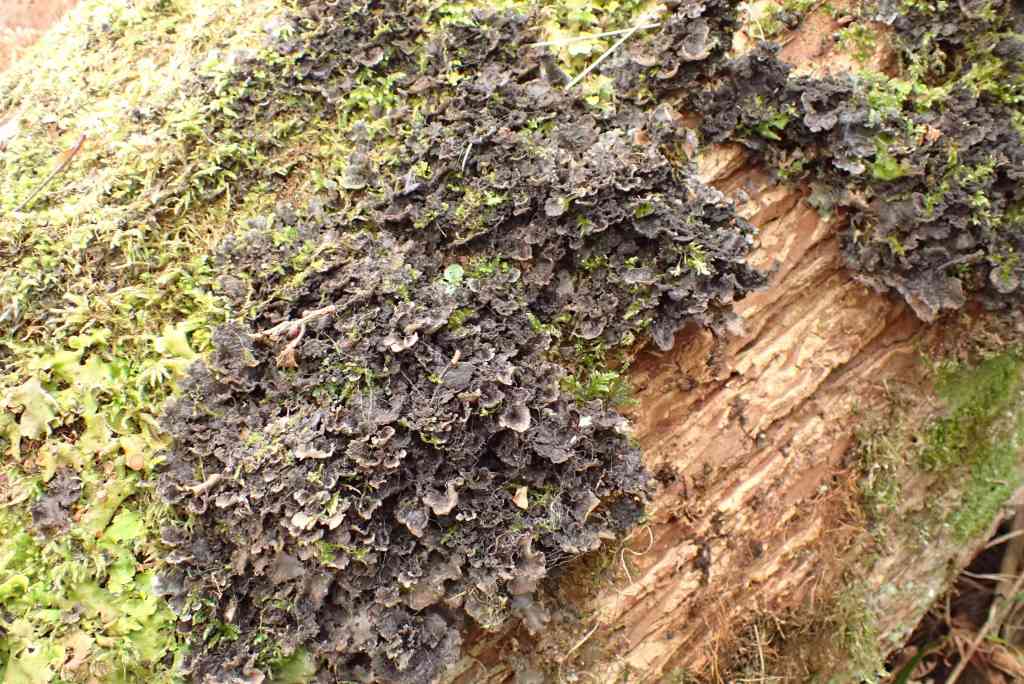

Larger fungi were a bit disappointing in both number and variety, but we found Candlesnuff Fungus (Xylaria hypoxylon) and Sulphur Tuft (Hypholoma fasciculare). A fungus with very small fruiting bodies was growing on lichen. It looks like Merismodes anomala. but this is normally found growing directly on dead wood.

I spotted a leaf mine on Common Valerian (Valeriana officinalis) that I have yet to sort out.
Later: the mine was made by a larva of the fly Liriomyza strigata. This turns out to be a new vice-county record.
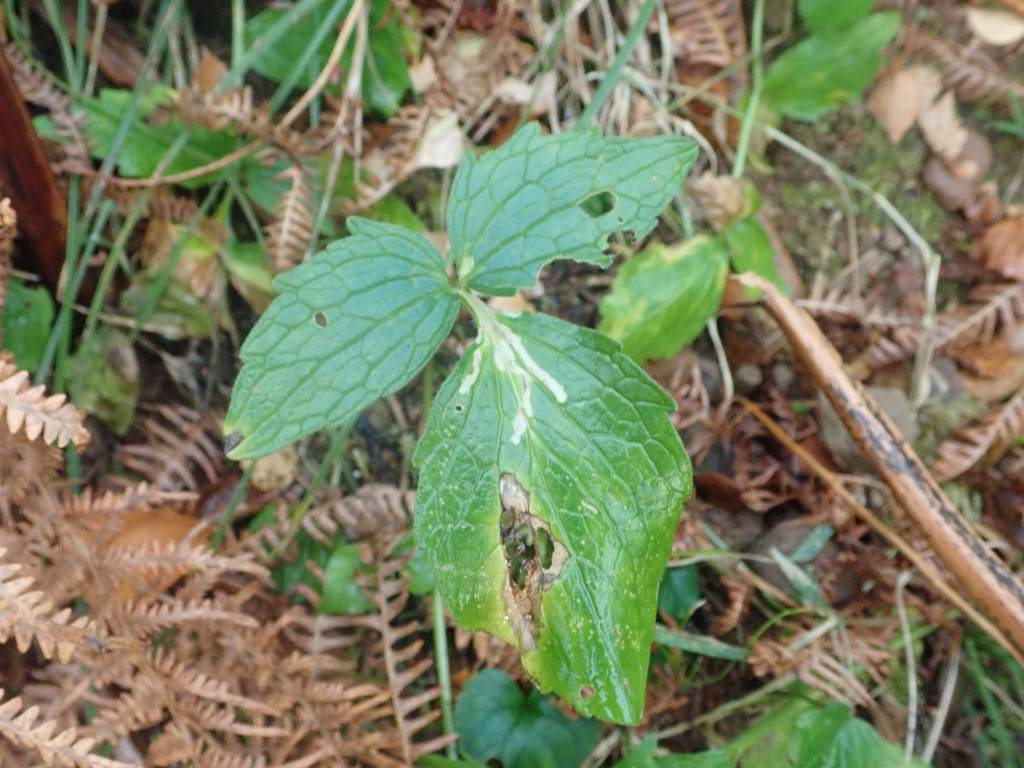
Down on the shore there was a wide variety of things to see, even if it wasn’t the lowest of low tides. A small specimen of Spiny Squat Lobster (Galathea strigosa), two (possibly three) species of sea squirts – Star Ascidian (Botryllus schloserri), Botryllus leachii (probably) and Lissoclinum perforatum – and Needle whelk (Bittium reticulatum) were just a few of the highlights.
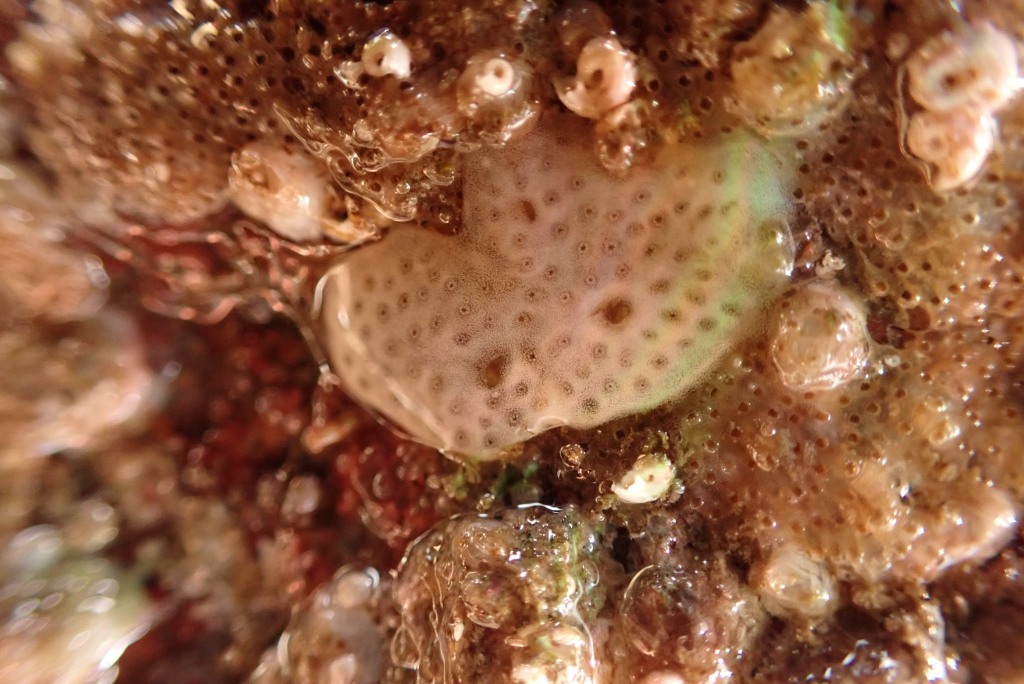

All images and i.d.s are down to Neil (except the leaf mine).
Sell & Murrell, Flora of Great Britain and Ireland, give three subspecies of Hedera helix: subsp. helix with six forms, subsp. hibernica with three varieties, one of which has four forms, and subsp. poetarum. Irish Ivy is taken to be a cultivar of subsp. hibernica.
They also say: “The taxonomy of ivies seems to be fundamentally flawed in that it is based on chromosomes and hairs and the flowers and fruits, considered so important in all other groups, have been completely ignored.”
There was a lot of cultivar production last century and both the American Ivy Society and the British Ivy Society were started in the 1970s. I don’t think the latter has survived, but would be happy to be corrected.
So, when Mike found a new feature of mature flower buds that might help separate things, I was keen to have a look at some here. Suffice to say for now that I also have one like his with odd flower buds and poor pollen. It remains unclear how this helps but Mike will be writing it up elsewhere soon and next year should see some more fieldwork.
It is also apparent that what is usually called ‘Hibernica’, contrary to what the books say, can be a pretty good climber and doesn’t necessarily have upturned edges to its leaves. Though just what ‘Hibernica’ comprises remains uncertain.
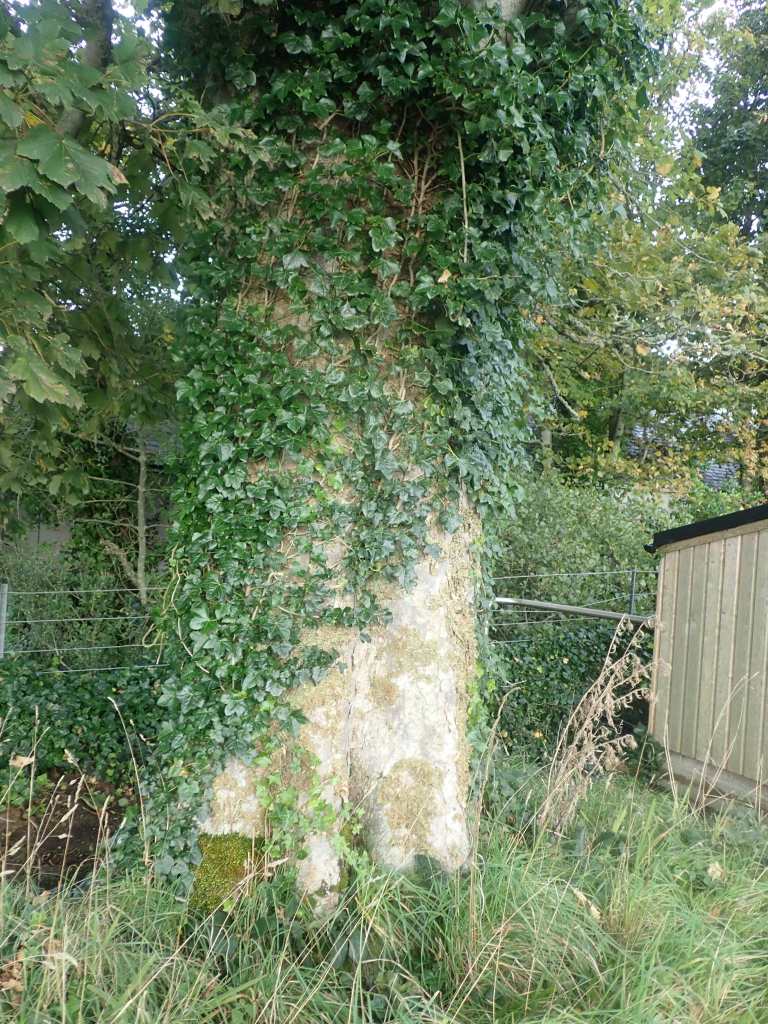


It is the peak time of the year for fungal fruiting bodies. Here are four that I have identified on Raasay recently.
I have also spotted Coprinus comatus Shaggy Inkcap in grassland and many others that I have not tried to identify. Mervyn and Vicki have found Calocera viscosa Yellow Stagshorn on a long-fallen conifer: